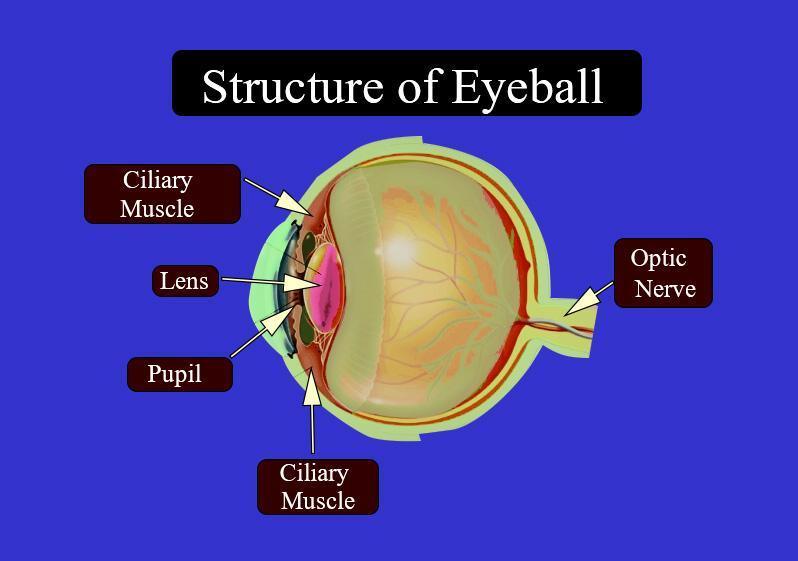
Human eye is sensitive to light of wavelength__________.
(a) 80-280nm
(b) 280-380nm
(c) 380-760nm
(d) 760-880nm
Answer
581.7k+ views
Hint: The human eye is sensitive to the wavelength range of the visible spectrum. The visible light is detected by photoreceptor cells known as cones and rods. Cones are associated with daylight vision and color vision while the rods are associated with vision under the low light.
Complete answer:
The human eye is sensitive to light of wavelength 380-760 nm. It is the wavelength range of the visible spectrum. The human eye is a sense organ that receives visual images, which are then sent to the brain for understanding the view.
Outline of the eye:
The cornea: It is a transparent structure present at the very front of the eye. It helps to focus the incoming light. A clear fluid called the aqueous humor is present between the cornea and the iris.
Iris: Behind the cornea, there is a colored, ring-shaped membrane known as the iris. It has a round customizable opening called the pupil, which controls the measure of light entering the eye.
Lens: It is situated behind the pupil and a colorless, transparent structure.
Ciliary muscles: It not only surrounds the lens but also holds it. It plays an important role in vision. On relaxation of the muscles, they pull and flatten the lens, allowing the eye to see objects far away. The ciliary muscle must contract to thicken the lens and to see closer objects.

So, the correct answer is, ’380-760nm.’
Note: Nearsightedness (can see near but not far objects) and farsightedness (can see far but not near objects) are two very common and very different types of vision defects. Both defects are due to refractive error abnormalities of the eye that affect its ability to focus light on the retina.
Complete answer:
The human eye is sensitive to light of wavelength 380-760 nm. It is the wavelength range of the visible spectrum. The human eye is a sense organ that receives visual images, which are then sent to the brain for understanding the view.
Outline of the eye:
The cornea: It is a transparent structure present at the very front of the eye. It helps to focus the incoming light. A clear fluid called the aqueous humor is present between the cornea and the iris.
Iris: Behind the cornea, there is a colored, ring-shaped membrane known as the iris. It has a round customizable opening called the pupil, which controls the measure of light entering the eye.
Lens: It is situated behind the pupil and a colorless, transparent structure.
Ciliary muscles: It not only surrounds the lens but also holds it. It plays an important role in vision. On relaxation of the muscles, they pull and flatten the lens, allowing the eye to see objects far away. The ciliary muscle must contract to thicken the lens and to see closer objects.

So, the correct answer is, ’380-760nm.’
Note: Nearsightedness (can see near but not far objects) and farsightedness (can see far but not near objects) are two very common and very different types of vision defects. Both defects are due to refractive error abnormalities of the eye that affect its ability to focus light on the retina.
Recently Updated Pages
The number of solutions in x in 02pi for which sqrt class 12 maths CBSE

Write any two methods of preparation of phenol Give class 12 chemistry CBSE

Differentiate between action potential and resting class 12 biology CBSE

Two plane mirrors arranged at right angles to each class 12 physics CBSE

Which of the following molecules is are chiral A I class 12 chemistry CBSE

Name different types of neurons and give one function class 12 biology CBSE

Trending doubts
One Metric ton is equal to kg A 10000 B 1000 C 100 class 11 physics CBSE

What is 1s 2s 2p 3s 3p class 11 chemistry CBSE

Discuss the various forms of bacteria class 11 biology CBSE

State the laws of reflection of light

Explain zero factorial class 11 maths CBSE

An example of chemosynthetic bacteria is A E coli B class 11 biology CBSE




